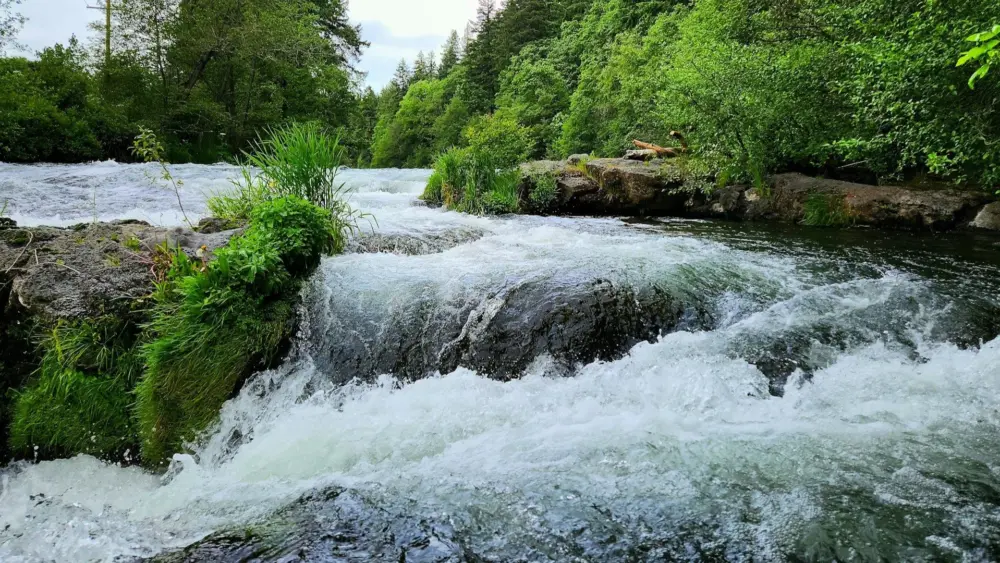In the wake of the pandemic, with growing economic uncertainty and climate change stressing public infrastructure, more Americans are seeking ways to live off the grid. This does not necessarily mean forgoing all modern conveniences. Rather, living off the grid simply often means just that – being disconnected from local utility grids and having a higher degree of self-sufficiency.
A recent study released by LawnStarter, a lawn care company that frequently conducts research into city and state amenities, created a weighted index of 23 key measures to identify the best states to live off the grid. These measures fall into one of five categories: feasibility, infrastructure, affordability, climate, and safety.
According to LawnStarter, Idaho ranks as the 17th best state for those seeking to live off the grid.
Idaho scores highest in the feasibility category, which includes measures like population density in rural areas and how suitable electric, water, and waste laws are for off-the-grid living. The state’s lowest ranking category is climate, which takes into account measures such as the average yearly amount of sunshine, the average yearly amount of rain, and days of extreme temperatures.
All data in this story is from LawnStarter. A full description of the methodology is available here.
| Rank | State | Overall off-the-grid score | Highest ranking category | Lowest ranking category |
|---|---|---|---|---|
| 1 | Iowa | 67.1 | Safety | Affordability |
| 2 | Texas | 65.6 | Infrastructure | Climate |
| 3 | Kentucky | 63.4 | Safety | Infrastructure |
| 4 | Minnesota | 61.3 | Safety | Climate |
| 5 | Oklahoma | 61.1 | Affordability | Climate |
| 6 | Nebraska | 61.0 | Safety | Climate |
| 7 | Kansas | 60.6 | Safety | Feasibility |
| 8 | North Dakota | 59.5 | Feasibility | Climate |
| 9 | Illinois | 58.9 | Safety | Affordability |
| 10 | Montana | 58.5 | Affordability | Climate |
| 11 | Missouri | 58.3 | Safety | Infrastructure |
| 12 | Wyoming | 57.8 | Affordability | Climate |
| 13 | South Dakota | 57.7 | Infrastructure | Climate |
| 14 | Wisconsin | 57.2 | Safety | Climate |
| 15 | Vermont | 56.9 | Infrastructure | Affordability |
| 16 | Arkansas | 56.8 | Climate | Infrastructure |
| 17 | Idaho | 56.6 | Feasibility | Climate |
| 18 | Tennessee | 55.5 | Affordability | Feasibility |
| 19 | Oregon | 55.2 | Feasibility | Climate |
| 20 | Maine | 54.3 | Infrastructure | Affordability |
| 21 | West Virginia | 54.1 | Affordability | Infrastructure |
| 22 | Indiana | 52.9 | Infrastructure | Feasibility |
| 23 | Georgia | 52.4 | Climate | Infrastructure |
| 24 | Ohio | 52.3 | Safety | Climate |
| 25 | Louisiana | 52.2 | Climate | Infrastructure |
| 26 | Mississippi | 52.2 | Safety | Infrastructure |
| 27 | Washington | 51.1 | Infrastructure | Climate |
| 28 | New Hampshire | 51.0 | Safety | Affordability |
| 29 | Alabama | 51.0 | Affordability | Feasibility |
| 30 | Virginia | 50.8 | Climate | Safety |
| 31 | South Carolina | 50.4 | Climate | Safety |
| 32 | New Mexico | 50.0 | Affordability | Safety |
| 33 | Hawaii | 49.6 | Climate | Affordability |
| 34 | California | 49.1 | Infrastructure | Affordability |
| 35 | Colorado | 48.1 | Affordability | Feasibility |
| 36 | Florida | 47.9 | Climate | Safety |
| 37 | Michigan | 47.9 | Safety | Climate |
| 38 | North Carolina | 46.8 | Climate | Feasibility |
| 39 | Delaware | 46.0 | Climate | Safety |
| 40 | Arizona | 46.0 | Climate | Affordability |
| 41 | New York | 45.5 | Infrastructure | Feasibility |
| 42 | Utah | 40.6 | Affordability | Safety |
| 43 | Alaska | 40.1 | Feasibility | Infrastructure |
| 44 | Pennsylvania | 40.0 | Climate | Feasibility |
| 45 | Nevada | 39.4 | Affordability | Safety |
| 46 | Massachusetts | 37.6 | Climate | Feasibility |
| 47 | Maryland | 36.6 | Climate | Feasibility |
| 48 | Connecticut | 34.5 | Climate | Feasibility |
| 49 | Rhode Island | 33.5 | Climate | Feasibility |
| 50 | New Jersey | 28.2 | Climate | Affordability |




